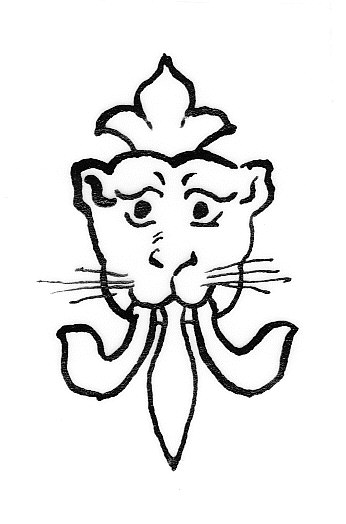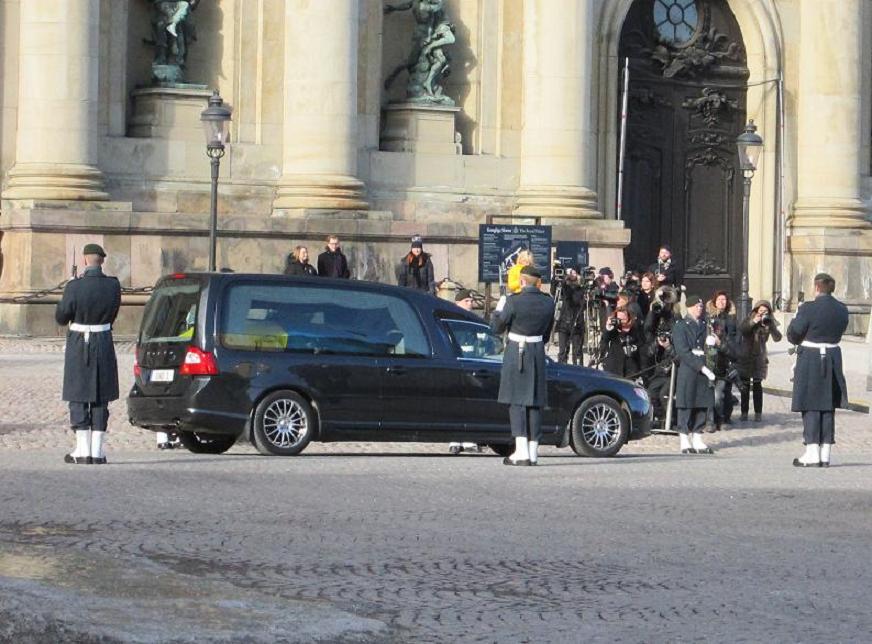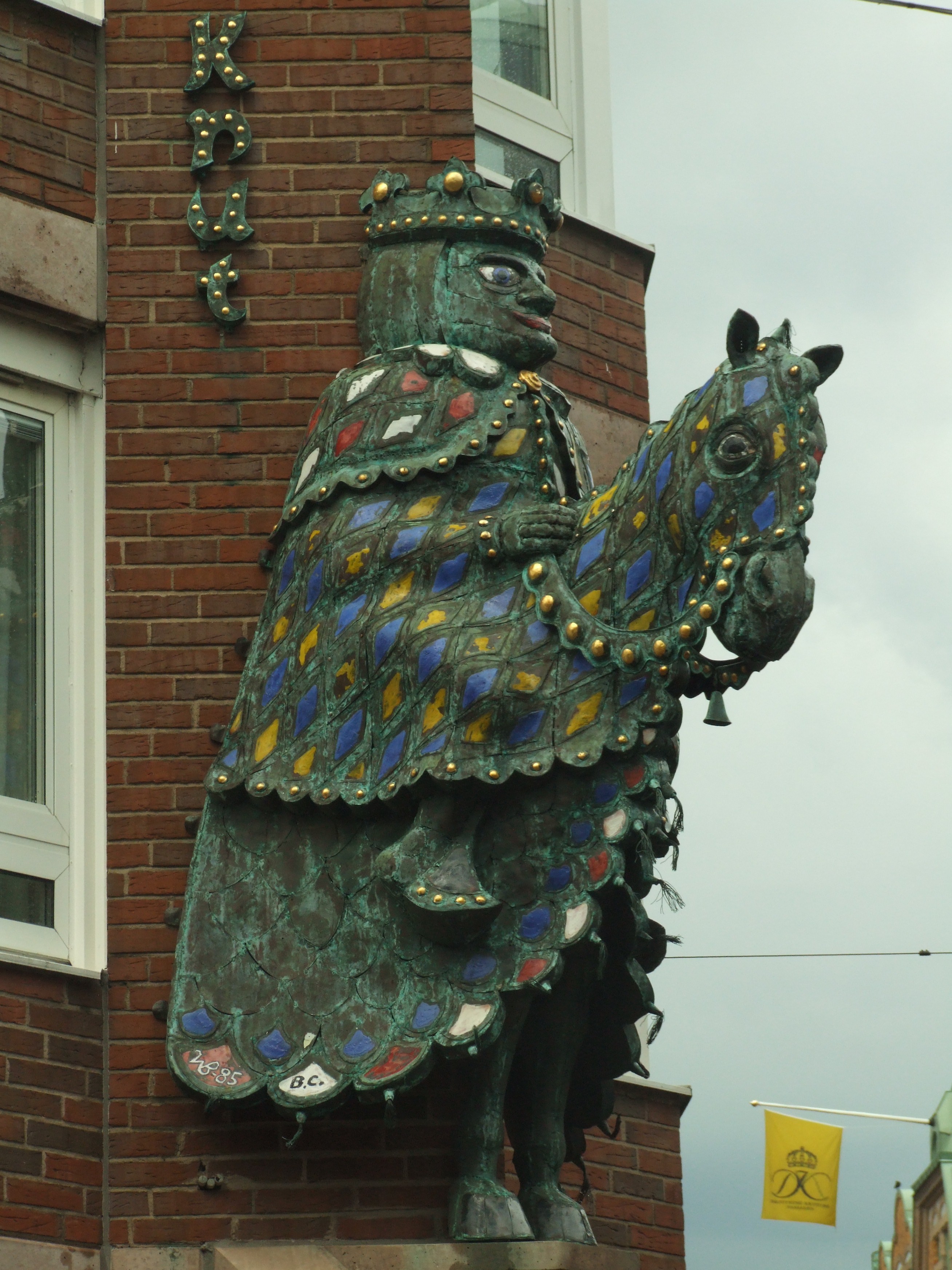|
Dukes Of Halland
This lists those feudalism, feudal magnates (counts, dukes, and other sort of princes) who have held Halland (''Hallandia'') as fief, or its southern or northern part, as a substantive title. Earl in Halland * Charles Eriksen, maternal grandson of Canute IV of Denmark, son of Eric, Earl of Falster Count of Halland *Canute VI of Denmark, Knud Valdemarsen, joint king of Denmark from 1170, prince of Halland 1177–1182 *Niels, Count of Halland, Niels I, Count of Halland, 1218Svane, Erling (2002), I Skjoldet springe Løver, Odense:University Press of Southern Denmark, pp. 30–34 (died the same year), bastard son of Valdemar II of Denmark Count of Northern Halland *Duke Skule of Norway, fiefholder of Northern Halland 1228–1240 *Niels II, Count of Northern Halland 1241–1251 *Jacob Nielsen, Count of Halland, Jacob Nielsen, Count of Halland (northern) 1283–1305 *Duke Erik Magnusson (duke), Erik Magnusson, fiefholder of North Halland (seat in Varberg castle) 1310–1318 Duke of ... [...More Info...] [...Related Items...] OR: [Wikipedia] [Google] [Baidu] |
Feudalism
Feudalism, also known as the feudal system, was a combination of legal, economic, military, cultural, and political customs that flourished in Middle Ages, medieval Europe from the 9th to 15th centuries. Broadly defined, it was a way of structuring society around relationships derived from the holding of land in exchange for service or labour. The classic definition, by François Louis Ganshof (1944),François Louis Ganshof (1944). ''Qu'est-ce que la féodalité''. Translated into English by Philip Grierson as ''Feudalism'', with a foreword by F. M. Stenton, 1st ed.: New York and London, 1952; 2nd ed: 1961; 3rd ed.: 1976. describes a set of reciprocal legal and Medieval warfare, military obligations of the warrior nobility and revolved around the key concepts of lords, vassals, and fiefs. A broader definition, as described by Marc Bloch (1939), includes not only the obligations of the warrior nobility but the obligations of all three estates of the realm: the nobility, the cl ... [...More Info...] [...Related Items...] OR: [Wikipedia] [Google] [Baidu] |
Erik Knudsen Skarsholm
Erik Knudsen (1255-1303) was a Danish duke and Drost, the youngest son of Canute, Duke of Estonia and Jadviga of Rügen and therefore a grandson of Valdemar II of Denmark and cousin of his contemporary the king Eric V of Denmark. In 1277 he was mentioned as a Junker. In 1279 he lived in Zealand on his farm of Skarsholm and was the chairman of the county council. In 1283 he was appointed as the Drost of Denmark. In 1284 he was made the Duke of Southern Halland. He was also the lord of Skarsholm. In 1285 he was knighted by the king of Sweden. He is buried in Ringsted Ringsted is a city located centrally in the Danish island of Zealand. It is the seat of a municipality of the same name. Ringsted is situated approximately from Copenhagen. History Ringsted was the site of ''Sjællands Landsting'' (lit. ''Z .... References {{DEFAULTSORT:Skarsholm, Erik Knudsen 13th-century Danish nobility Dukes of Denmark 1255 births 1303 deaths ... [...More Info...] [...Related Items...] OR: [Wikipedia] [Google] [Baidu] |
Søborg Castle
Søborg Castle (, ) is a ruined castle south of Gilleleje in North Zealand, Denmark. It was one of the strongest castles in Denmark and was also used as a prison. It was inhabited until the Count's Feud in 1535, when it is speculated that it was destroyed. In 1577, the feudal tenant was granted permission to use the ruins as a quarry. History Søborg Castle is first known from the 12th century, when ownership of the castle passed from the king to the Bishop of Roskilde. Valdemar of Denmark (bishop), Bishop Valdemar was imprisoned at Søborg Castle from 1198 to 1206. Valdemar IV, Duke of Schleswig was confined at Søborg Castle in 128586. Queen Margaret I of Denmark was born at the prison of Søborg Castle, where her father, King Valdemar IV of Denmark, had confined her mother, Helvig of Schleswig. Traditionally, Archbishop Eskil of Lund is said to have expanded the previous buildings to a real castle with defensive walls and a moat. As Eskil was in close contact with Esrum ... [...More Info...] [...Related Items...] OR: [Wikipedia] [Google] [Baidu] |
Division Of The Field
In heraldry, the field (heraldry), field (background) of a escutcheon (heraldry), shield can be divided into more than one area, or subdivision, of different tincture (heraldry), tinctures, usually following the lines of one of the ordinary (heraldry), ordinaries and carrying its name (e.g. a shield divided in the shape of a Chevron (heraldry), chevron is said to be parted "per chevron"). Shields may be divided this way for ''differencing'' (to avoid conflict with otherwise similar coats of arms) or for purposes of ''Heraldry#Marshalling, marshalling'' (combining two or more coats of arms into one), or simply for style. The lines that divide a shield may not always be straight, and there is a system of terminology for describing patterned lines, which is also shared with the heraldic ordinaries. French heraldry takes a different approach in many cases from the one described in this article. Common divisions of the field Common partitions of the field are: * ''parted'' (or '' ... [...More Info...] [...Related Items...] OR: [Wikipedia] [Google] [Baidu] |
Leopard (heraldry)
The leopard in heraldry is traditionally depicted the same as a lion, but in a walking position with its head turned to full face, thus it is also known as a lion passant guardant in some texts, though leopards more naturally depicted make some appearances in modern heraldry. ''The Oxford Guide to Heraldry'' makes little mention of leopards but glosses ''leopard'' as a "term used in medieval heraldry for ''lion passant guardant''. Now used for the natural beast." Another name for this beast is the ounce. Early heraldic leopards The typical heraldic leopard differs from the natural leopard (''Panthera pardus'') in that it has no spots and often has a mane, but is generally similar in appearance to a heraldic lion, other than its attitude. In the Middle Ages, leopards were thought to be a crossbreed between a lion and a pard. Arthur Charles Fox-Davies wrote in 1909 that the distinction between lions (which were constantly rampant) and leopards (which were necessarily walkin ... [...More Info...] [...Related Items...] OR: [Wikipedia] [Google] [Baidu] |
Heraldry
Heraldry is a discipline relating to the design, display and study of armorial bearings (known as armory), as well as related disciplines, such as vexillology, together with the study of ceremony, Imperial, royal and noble ranks, rank and genealogy, pedigree. Armory, the best-known branch of heraldry, concerns the design and transmission of the Achievement (heraldry), heraldic achievement. The achievement, or armorial bearings usually includes a coat of arms on a escutcheon (heraldry), shield, helmet (heraldry), helmet and Crest (heraldry), crest, together with any accompanying devices, such as supporters, Heraldic badge, badges, Heraldic flag, heraldic banners and mottoes. Although the use of various devices to signify individuals and groups goes back to Ancient history, antiquity, both the form and use of such devices varied widely, as the concept of regular, hereditary designs, constituting the distinguishing feature of heraldry, did not develop until the High Middle Ages. It i ... [...More Info...] [...Related Items...] OR: [Wikipedia] [Google] [Baidu] |
Coat Of Arms
A coat of arms is a heraldry, heraldic communication design, visual design on an escutcheon (heraldry), escutcheon (i.e., shield), surcoat, or tabard (the last two being outer garments), originating in Europe. The coat of arms on an escutcheon forms the central element of the full achievement (heraldry), heraldic achievement, which in its whole consists of a shield, supporters, a crest (heraldry), crest, and a motto. A coat of arms is traditionally unique to the armiger (e.g. an individual person, family, state, organization, school or corporation). The term "coat of arms" itself, describing in modern times just the heraldic design, originates from the description of the entire medieval chainmail "surcoat" garment used in combat or preparation for the latter. Roll of arms, Rolls of arms are collections of many coats of arms, and since the early Modern Age centuries, they have been a source of information for public showing and tracing the membership of a nobility, noble family, a ... [...More Info...] [...Related Items...] OR: [Wikipedia] [Google] [Baidu] |
Prince Julian, Duke Of Halland
A prince is a male ruler (ranked below a king, grand prince, and grand duke) or a male member of a monarch's or former monarch's family. ''Prince'' is also a title of nobility (often highest), often hereditary, in some European states. The female equivalent is a princess. The English word derives, via the French word ''prince'', from the Latin noun , from (first) and (head), meaning "the first, foremost, the chief, most distinguished, noble ruler, prince". In a related sense, now not commonly used, all more or less sovereign rulers over a state, including kings, were "princes" in the language of international politics. They normally had another title, for example king or duke. Many of these were Princes of the Holy Roman Empire. Historical background The Latin word (older Latin *prīsmo-kaps, ), became the usual title of the informal leader of the Roman senate some centuries before the transition to empire, the ''princeps senatus''. Emperor Augustus established the forma ... [...More Info...] [...Related Items...] OR: [Wikipedia] [Google] [Baidu] |
Princess Lilian, Duchess Of Halland
Princess Lilian of Sweden, Duchess of Halland (born Lillian May Davies, later Craig; 30 August 1915 – 10 March 2013), was a British fashion model who became a member of the Swedish royal family through her 1976 marriage to Prince Bertil, Duke of Halland (1912–1997). As such, she was an aunt of King Carl XVI Gustaf of Sweden and Queen Margrethe II of Denmark. Biography Early life Lillian May Davies was born on 30 August 1915, in Swansea, Wales, the daughter of William John Davies, who had a market stall after working in a coal mine, and his wife Gladys Mary (née Curran), a shop assistant. The site of the terraced house where they lived is now beneath the Quadrant Shopping Centre. Her parents separated in the 1920s, but they were not divorced until 1939. She moved to London when she was 16. She dropped one 'l' from her first name when she became a fashion model. She was photographed for magazines such as ''Vogue''. In 1940 Lilian married the Scottish actor Ivan Craig (191 ... [...More Info...] [...Related Items...] OR: [Wikipedia] [Google] [Baidu] |
Prince Bertil, Duke Of Halland
Prince Bertil of Sweden, Duke of Halland (Bertil Gustaf Oskar Carl Eugén; 28 February 1912 – 5 January 1997), was a member of the Swedish royal family. He was the third son of King Gustaf VI Adolf and his first wife, Princess Margaret of Connaught, as well as the uncle of King Carl XVI Gustaf of Sweden. From 1973 to 1979, he was heir presumptive to his nephew Carl XVI Gustaf and the Swedish throne. Early life Bertil was born on 28 February 1912 at Stockholm, as the fourth of five children born to Princess Margaret of Connaught and Crown Prince Gustaf Adolf of Sweden. His siblings included: Prince Gustaf Adolf, Duke of Vasterbotten, Prince Sigvard, Duke of Uppland, Princess Ingrid and Prince Carl Johan, Duke of Dalarna. The family lived in apartments at Stockholm Palace in Stockholm, at Ulriksdal Palace near the capital in Ulriksdal and at the summer residence: Sofiero Palace in Helsingborg in the southernmost province of Sweden, Scania. Royal role Bertil was granted a ... [...More Info...] [...Related Items...] OR: [Wikipedia] [Google] [Baidu] |
Benedict, Duke Of Halland
Bengt Algotsson (also Benedictus; d. 1360) was a medieval Swedish lord. He was the Duke of Finland and Halland, as well as the Viceroy of Scania in 1350s. Ancestry Bengt Algotsson's grandfather from the paternal side, Brynolf Bengtsson, was likely a son of , a lawman in Västergötland. Through his grandmother Ingegärd, daughter of Svantepolk Knutsson, he was descended from both the Danish and Swedish royal houses. His coat of arms was a standing lion; thus, the family has in some later reconstructions been called ''Lejon''. This may also mean they were kin with the Folkunge, his line's ancestress belonging to those siblings of Boberg family who were nephews and nieces of Birger Jarl. Career Bengt Algotsson participated in Magnus Eriksson's second crusade to Novgorod in 1350, and was knighted after it. From 1352 he is known to have had a seat in the kingdom's Privy Council. In about 1353, Bengt was created Duke of Finland and Halland by the King Magnus. The title of H ... [...More Info...] [...Related Items...] OR: [Wikipedia] [Google] [Baidu] |
Canute Porse
Canute Porse the Elder or ''Knud/Knut Porse'' (died 30 May 1330) was a medieval Danish nobleman and Duke of Samsø, Duke of Halland, Duke of Estonia, and Count of Kalundborg. Biography Porse was the son of Peder Porse, who was one of several Danish nobleman involved in the assassination of King Eric V of Denmark and thus was exiled since 1286 with his family. On 21 June 1327, Porse married Norwegian princess Ingeborg (1301–1361), daughter of King Haakon V of Norway (1270–1319). She was also Duchess of Södermanland by her first marriage to Swedish prince Eric Magnusson, Duke of Södermanland (1282–1318). Through her first marriage, she was the mother of King Magnus (IV & VII) of Sweden and Norway (1316–1374) and of Euphemia of Sweden (1317–1370) wife of Albert II, Duke of Mecklenburg. This made him the step-father of the King of Norway-Sweden. Before marrying Duchess Ingeborg, Porse had led the troops that put a military end to the reign of her brother-in ... [...More Info...] [...Related Items...] OR: [Wikipedia] [Google] [Baidu] |







